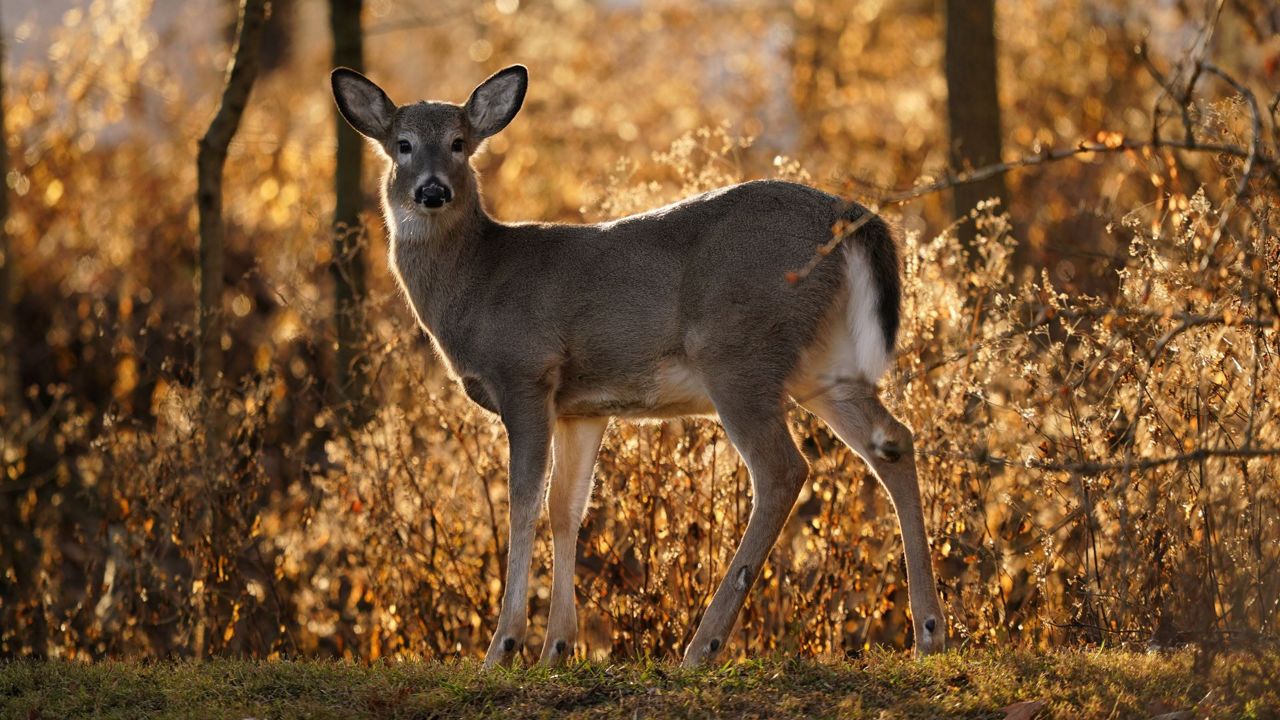COLUMBUS, Ohio — A survey from the Ohio Department of Natural Resources (ODNR) Division of Wildlife found that 68% of red oaks statewide bore acorns this year, a jump of 14% when compared to last year.
They also found that white oaks trees acorn-bearing percentage dropped from 40% to 36%, according to a press release from the division laying out the results of the 2024 acorn mast survey that looked at oaks in 31 wildlife areas in the state.
“The long-term average for red oak production is 55%, and 34% for white oaks,” the release reads.
But why does it matter what percentage of trees produced acorns?
Well, ODNR says this information is helpful for hunters, many of whom “use to help guide them when it comes to finding wildlife during hunting seasons.” The acorns feed a large swath of different animals.
The division has been conducting this survey for 20 years now. They not only find the percentage of acorn-bearing trees but also the “relative size of the acorn crop.”
You can see more details about the results here:
“Red oaks in 2024 had an average abundance of 24% of the tree’s crown holding acorns, up from 16% last year and besting the long-term average of 19%,” the release reads. “White oaks averaged 5% acorn crown coverage, below both last year’s result (9%) and the long-term average (9%).”
There will be more acorns from red oak trees this year and fewer from white, the release states.
There’s a number of differences between red and white oak acorns.
Red
- Develop over two years
- Taste bitter
- Drop later than white, sometimes not until winter
White
- Develop over one year
- Taste sweeter
- Drop in late summer/early fall
“These differences cause periodic fluctuations in statewide acorn abundance,” the release reads. “Low mast production years are a normal part of this cycle, and wildlife readily adapt to find alternative food sources.”
The way acorn production and abundance affects animal behavior (where they gather, how often they move) can be useful for hunters looking for that perfect spot to set up.
“Hunters may key in on travel corridors and alternate food sources,” the release reads. “In regions with a strong acorn crop this fall, hunters may find success hunting in or near oak stands. Red oak stands may be of interest to deer hunters this fall, especially later in the year.”
If you’re not a hunter, you can still make use of this information. The release also offers some advice on how grow your own oak trees.
“Collect mature acorns in the fall and place them in a bucket of water,” the release reads. “Keep the ones that sink and discard any that float, as those won’t germinate. Store the remaining acorns in the refrigerator or outside for at least eight weeks in the winter months. Plant the acorns under a shallow covering of soil in the early spring, water regularly, and enjoy seeing your new oak trees grow. “



